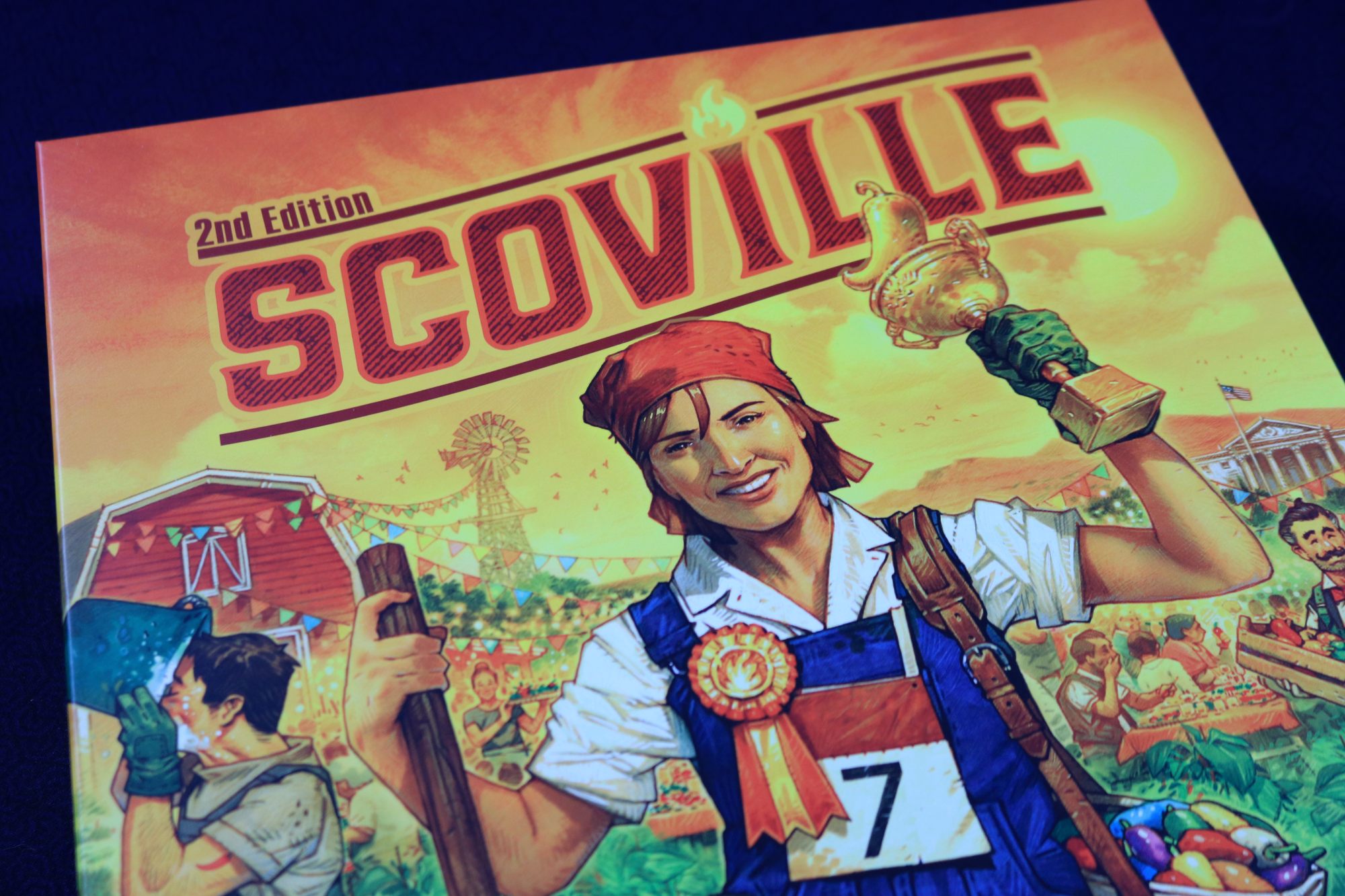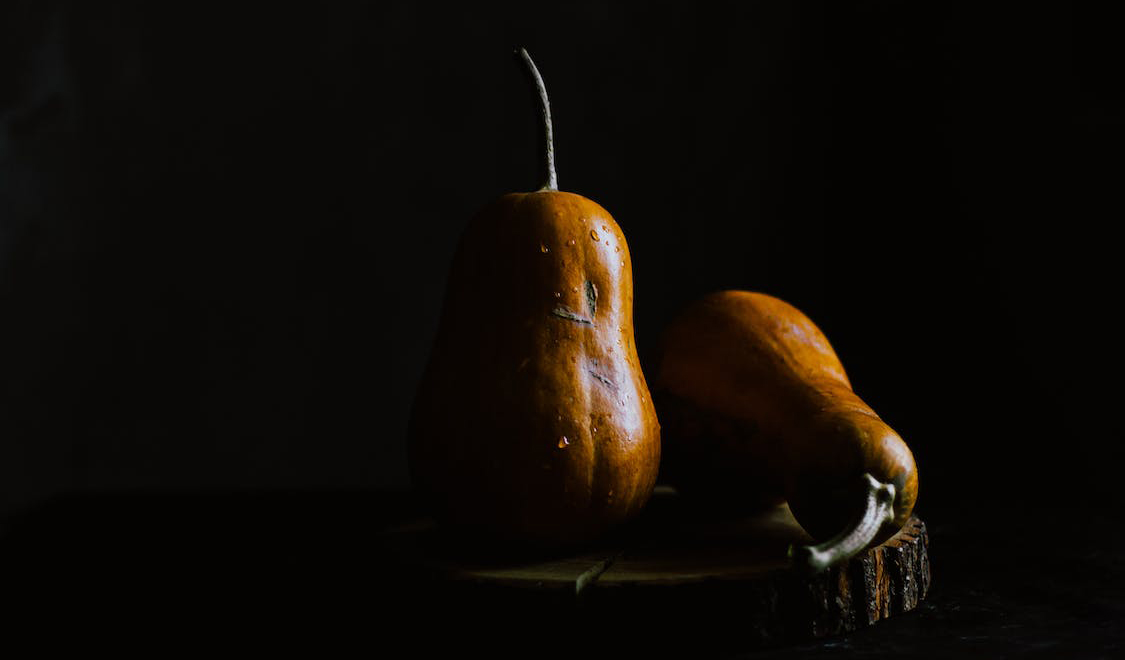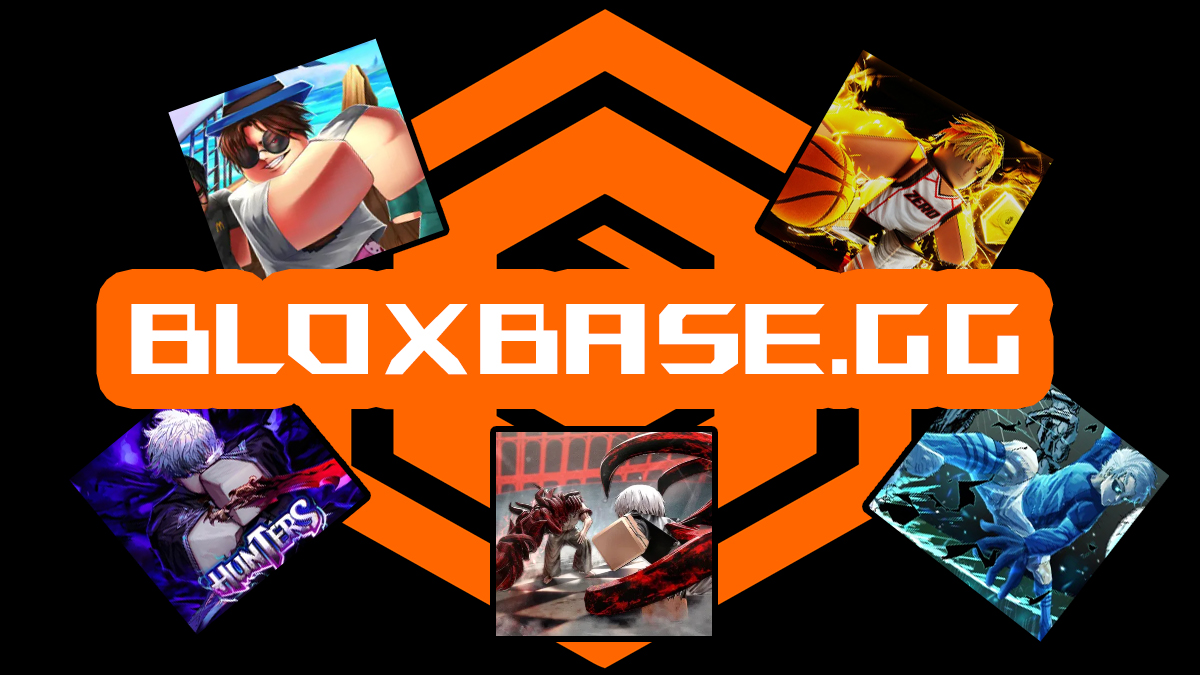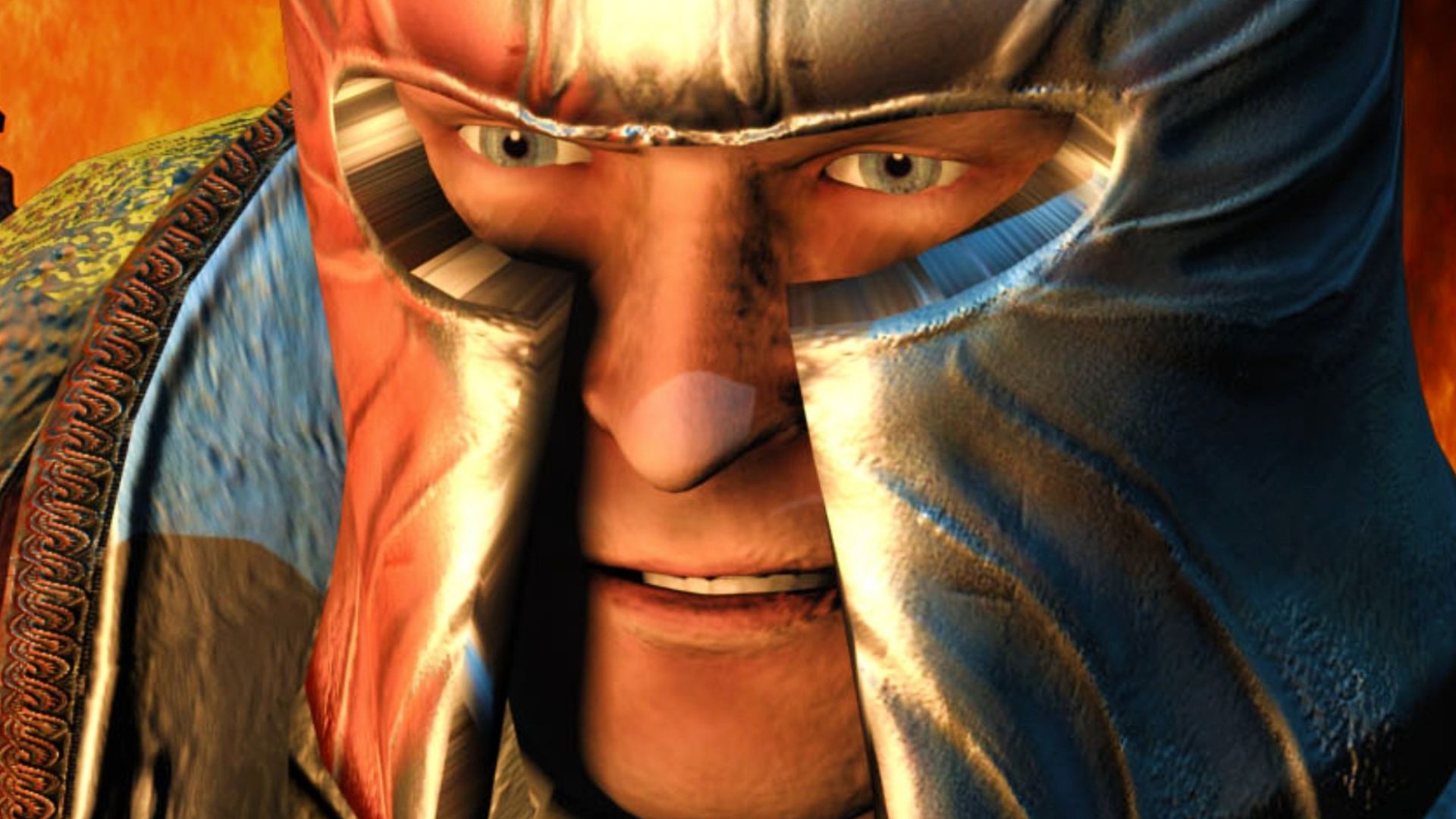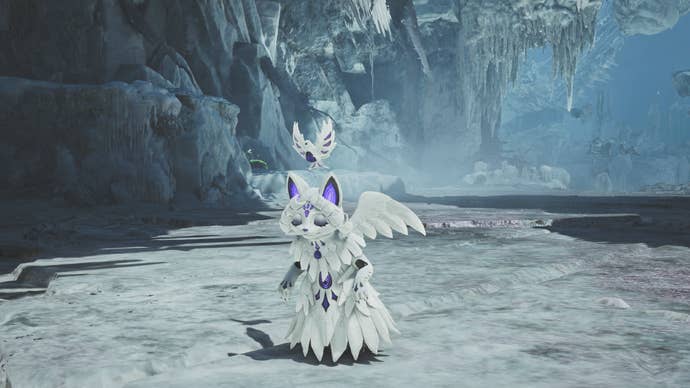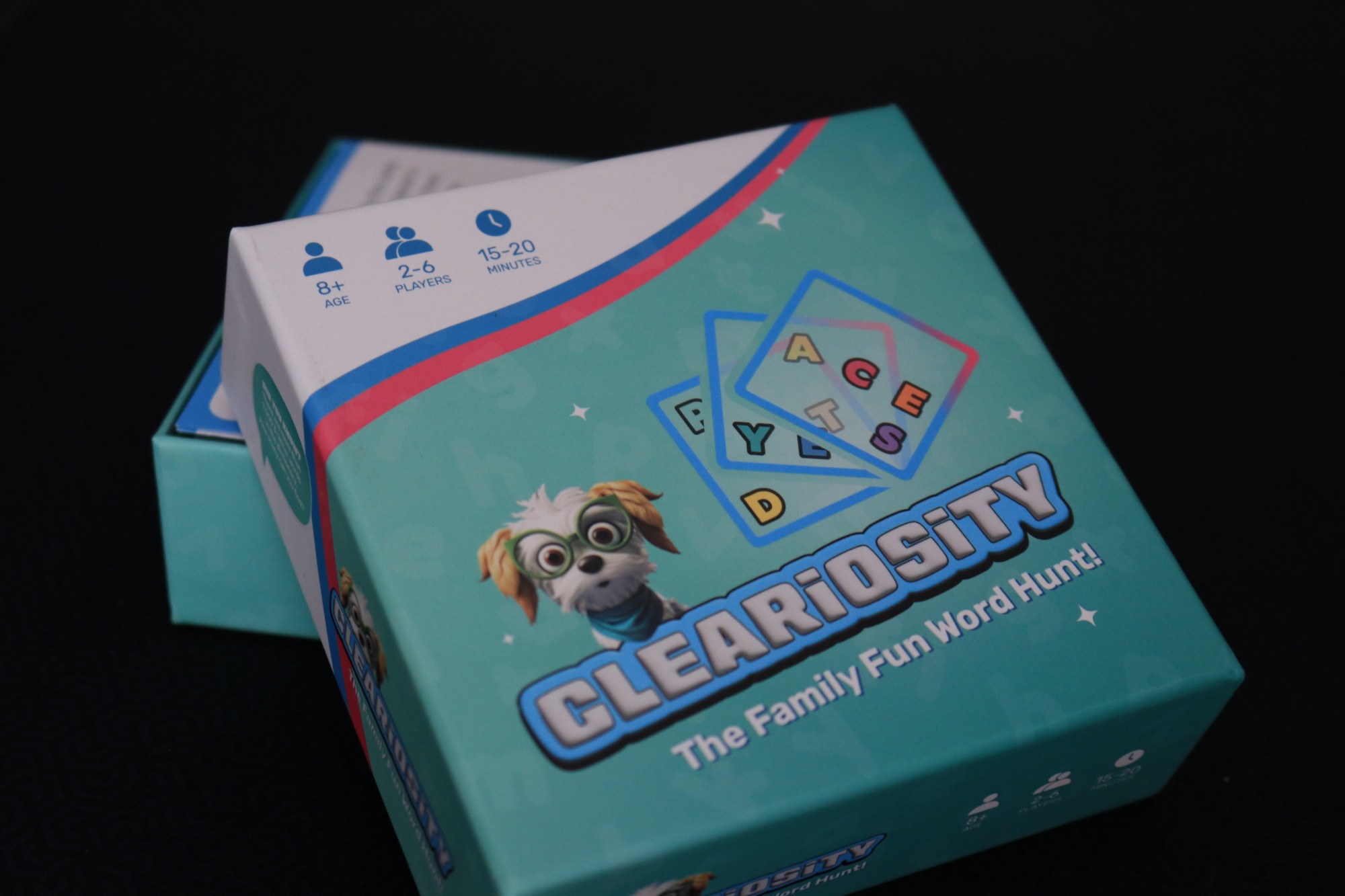The original game of Scoville was published in 2014 by Tasty Minstrel Games (R.I.P.). This auction and set collecting game has been out of print for a while but is highly regarded by friends who have played it.
For years, I’ve wanted to add this game to our collection but wasn’t ready to spend the money for a used copy. Trick or Treat Games picked up the license and recently published Scoville Second Edition. Now that I’ve played this modern classic from Ed Marriott, does it live up to the hype that was in my head?

Mornings on the Farm
In Scoville, players are pepper farmers who are planting, harvesting, fulfilling pepper orders, and making chili. Each round starts with an auction where players will bid for their turn order in the round. The turn order allows players to choose a pepper card from the auction display, earning the pepper(s) on the card. Choosing your position matters because planting and order fulfillment takes place in turn order, but harvesting takes place in reverse turn order.
Each round follows this order:
Planting: In turn order, players will place a single pepper from their supply into the central board. Peppers will cross-breed with the peppers next to them. Each player has a player aid showing the color pepper that is created between two pepper colors.
Harvest: In reverse turn order, players will move their farmer up to three steps in the garden. The player will harvest a new pepper(s) from the supply based on the two peppers they are between on the board. For example, being between a blue pepper and a yellow pepper will produce a purple pepper.
Fulfillment: In turn order, players can turn in peppers to fulfill cards in the farmers market and/or fulfill a chili recipe card. This is how you earn more money and victory points. Players can also earn money by selling a single color of pepper, earning $1 for every two peppers of that color in the field.

Each game is broken into two halves, the morning and afternoon. Once players trigger the start of the afternoon phase, the auction block will gain better cards and the Farmers Market cards become tougher to fulfill but earn much better rewards.
Players also have three one time use actions that allow them to double-back with their movement, plant an additional pepper, and move an extra step. If you don’t use these special actions, they are worth four victory points each at the end of the game.

A Slow Burn
The gameplay is Scoville is a bit of a slow burn as you increase your pepper supply, gain new pepper colors, and move your way into the outer edges of the field. In your first couple turns, you’ll plant and harvest some of the same peppers. Players can choose to be selfish with their new cross breeds by planting a new pepper color out of reach of the other players.
Once players unlock the coal and white colored peppers, things really open up to fulfill high point chili recipes. Players are always looking to gain white and ghost peppers since they are present on the highest value cards in the game.

Scoville plays up to six players but I would rarely suggest playing with the max number of players. Often, players are referencing the cross-breed player aid and looking at what chili recipes they are close to fulfilling. This can make rounds drag out at the highest player count. If everyone knew how to play the game and had some experience with Scoville, I think playing with six players could be smooth. I would never play with new players at this player count.

When you get into the five and six player count, the pepper field begins to have hot spots where all the best peppers are located. We’ve seen two players break away from the center, dropping important pepper colors as far away as they can in order to limit access to other players. It’s important to watch what other players are doing during the planting phase and anticipate where the best peppers are being placed.
What’s New?
This second edition printing has a lot of upgrades that players should know about. The original printing came with wooden peppers, and colorblind players had big issues with the color choices. Trick or Treat Studios fixed this with new plastic peppers that have a very clear letter embossed on each pepper that helps players to know what color they have. I love the rounded, plastic peppers in the game and think it’s an absolute upgrade from the original wooden ones.

Vincent Dutrait also did a complete overhaul of the artwork which looks fantastic. His signature style is present on the board, cards, game box and even player screens. The board pieces together like a puzzle and is double-sided with the solo player experience on the back.
The game also comes with a brand-new solo experience for players to check out. At the time of this review, I’ve not played it yet, but I’ve been enjoying the game enough that I will absolutely check it out. Also in Scoville Second Edition is the Scoville Labs expansion that many struggled to find for the original game.

Players are given a lab board where they can plant additional peppers, immediately gaining the cross-bred peppers that are created based on adjacency. This expansion also adds a few new cards and will speed up the access to more rare peppers for individual players.
On top of all this, there are new fulfillment cards that haven’t been seen before. The number of chili recipe cards is impressive and no two games will have the same cards. This is nice for replayability.
Final Thoughts
Did Scoville live up to the hype that I had in my head? For the most part, yes.
Scoville has been a “grail game” for me for a long time. It connects with my love of spicy food, gardening, and includes some of my favorite mechanics. I’m a big fan of this game and I think the upgrades that were made in this second edition are fantastic.

I started to appreciate the slow burn of the game in those first few rounds after a couple games. Scoville is a game that is going to take every bit of 60 to 90 minutes but I really enjoy everything it does. Players are always working to fulfill orders, with their turn order in the round playing a very important part. The bidding and turn order felt less important at three players but is absolutely vital at four to six players.
If you missed out on owning the original printing of this game or just want the upgrade, Scoville Second Edition is a great addition to your game collection. This is one that I’m proud to finally have in our collection.
Scoville Second Edition is now available at your local game store, or on the Trick or Treat webstore.
This game was provided to us by the publisher for review. Read more about our review policies at One Board Family.
Highs
- Big fan of the updated visuals from Vincent Dutrait
- New edition includes new solo experience and Labs expansion
- Loads of chili recipes and Farmers Market orders
- Bidding mechanic really shines at the higher player counts
Lows
- Would probably never play at 6-players
- First couple turns can be slow
Complexity

Time Commitment

Replayability

